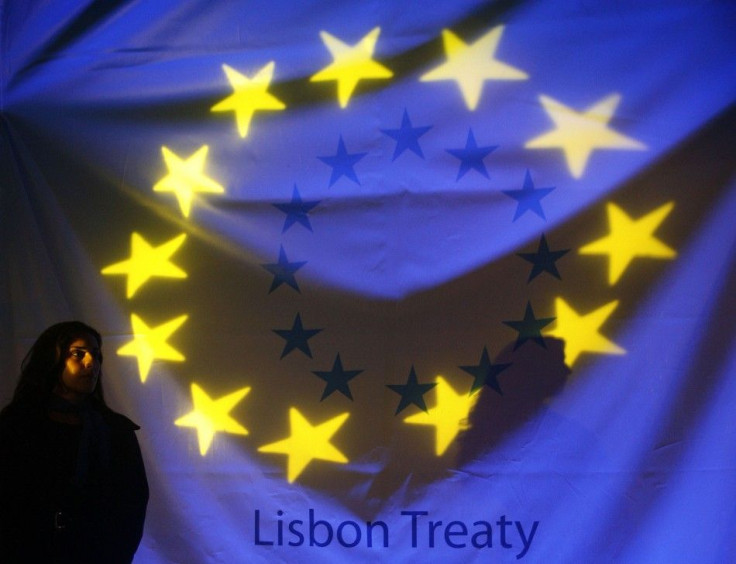U.S. And Russia At Odds On European Treaty
Opinion

WASHINGTON -- For most of the second half of the 20th century, hundreds of thousands of troops from America and its NATO allies faced off against troops from the Soviet Union and its Warsaw Pact allies in a Cold War standoff across Europe -- each side fearing the other would attack and potentially set off World War III.
Eager to avoid such a holocaust, both sides spent years negotiating the Treaty on Conventional Forces in Europe, or CFE, which entered into force in 1992. The treaty placed limits on the conventional military equipment and forces of NATO and the Warsaw Pact states to prevent major military attacks and created a verification system to prevent cheating.
Europe is very different today. The Soviet Union and the Warsaw Pact no longer exist. Many former communist nations that were members of the Warsaw Pact are now members of NATO, as are some of the nations carved out of the former Soviet Union.
Russia withdrew from the CFE Treaty in 2007, citing “extraordinary circumstances.” Since then, nations in the Organization for Security and Cooperation in Europe have engaged in talks seeking a replacement treaty to promote peace in Europe while reflecting today’s changed security reality. Unfortunately, the two sides are far apart.
The United States wants a new treaty that will provide assurances regarding the stationing of troops and a greater degree of transparency concerning military activities. Transparency is critical to ensure that routine military maneuvers are not viewed by the other side as the beginning of an attack, to prevent a potential pre-emptive strike.
Russia insists that any new agreement take a broader approach to weapons limitations. Rather than providing limitations to categories of conventional weapons, as the current treaty does, Russia has repeatedly stated that it is only open to negotiations that address a broader scope of new weaponry. This includes modern high-precision conventional weapons capable of delivering nuclear bombs, along with drones.
Russia also wants any new treaty to evaluate armaments based on how quickly they can be battle-ready, as well as the extent of the damage they can do.
The U.S. is correct to assert that sharing information reduces misunderstandings that could spark conflicts. Russia is correct that limitations to capabilities must cover the full spectrum of contemporary weapons to lower the likelihood of war.
There is, however, no common ground in these long-standing positions, which makes it difficult for talks on a new treaty to begin.
Since Russia withdrew from the existing CFE Treaty in 2007, NATO allies have focused on bringing Russia back to the negotiating table based on a "new" framework for a treaty that looks strikingly similar to the old one. These efforts have faltered for this very reason.
While no one expects World War III to erupt across Europe in the near future, U.S. officials demand transparency because they are concerned about recent Russian military activities. While keeping military exercises just slightly below 9,000 troops – the limit for the notification of such activities under the treaty regime – Russia has conducted a number of "exercises" that have caused alarm.
Moreover, Russia recently completed a major multibillion-dollar upgrade of its military organization and capabilities. The latter has included initiatives on weapons replacement, weapons factory modernization, and a modernization of Russia’s missile defense system on par with U.S. plans. It also includes the procurement of stealth fighter jets, cruise missiles, amphibious warships and ballistic missile submarines.
The upgrade and military exercises – combined with the 2008 Russian invasion of Georgia – raises NATO’s concerns about further Russian military moves in areas formerly part of the Soviet Union or perhaps even in the old Soviet sphere of influence.
At the same time, Russia is concerned about America’s newer, lighter, faster and more powerful forces that give NATO the ability to intervene in small conflicts within Europe. Such sub-regional conflicts lie outside the scope of the existing CFE Treaty, which is focused on preventing a major pan-European war.
Russia is also worried about the impact of ongoing NATO enlargement on the balance of forces established by the original CFE Treaty. Furthermore, because its military was badly embarrassed when its land-based systems performed poorly in Georgia, Russia may be looking to both equalize and modernize its forces.
Russia is correct when it says discussions about discreet categories of conventional weapons make little sense without a conversation about limits on far more powerful adaptable and destructive forces. Russia has also linked prospects for further nuclear arms reductions and a new CFE Treaty to an agreement limiting the U.S.'s proposed missile defense shield.
The U.S. and its NATO allies either need to broaden the scope of the dialogue surrounding the replacement of the CFE Treaty or proceed to engage Russia and potential treaty partners using a plan of action that includes a multiple channel approach to arms control that addresses the full spectrum of threats caused by capabilities.
My research shows that arms control negotiations are more successful – and treaties are more durable – when they have a broad scope, place multiple restrictions on many types of weapons, and include provisions or flexibility for adapting to the technological change that affects weaponry. At the same time, the negotiations need to establish measures for the exchange of information, on-site inspections and timely notifications. But transparency alone is not the panacea and there's no bringing Russia back to the old treaty.
Amy J. Nelson is a research fellow at the Stimson Center and SIPRI North America.
© Copyright IBTimes 2024. All rights reserved.











